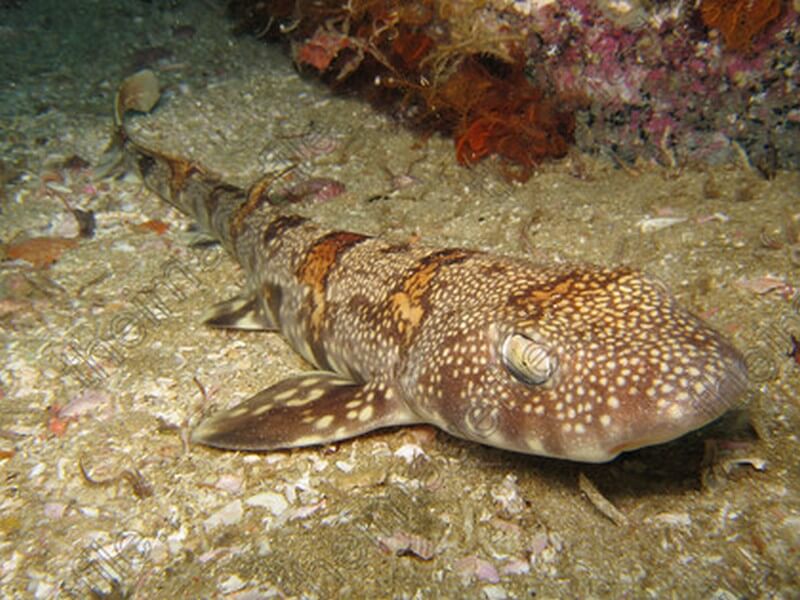Let’s Talk About It…Puffadder Shyshark – aka – Cat Shark
Found in False Bay, amongst other areas in the Western Cape through to Angola, this shark is a species of catshark! 
It is also known as a “Happy Eddie” but that is easier to explain, as its scientific name is Haploblepharus Edwardsii, you can see how that came to pass right?

A Shark growing to a maximum of 60cm…cute.
A small shark, growing to a maximum of 60cm in length (24 inches), it can be found at depth of up to 130 meters (426 feet) in rocky bottoms or habitats. It is slender with a flattened body and head and covered in little white spots all over its back. Various hues of brown are patched onto its little body. Not to be confused with the Natal Shyshark, or “Happy Kitty” as it is sometimes referred to … Haploblepharus
Kistnasamyi, get it? These two species differ in appearance and their preference of living areas.
Another reason for the name “Shyshark” is because when this little fella feels threatened, it will curl itself up, into a circle covering its eyes with its tail explaining the name given by local fisherman of “Doughnut”. It does this for obvious reasons; one of them being that this shape is a little more difficult for its predators to swallow. You may ask, what feeds on this little guy, well larger sharks and fish for one, and even the Cape Fur Seal will play a game of toss with him, which can and sadly does often result in the death of the Puffadder Shyshark, even though the seals do not eat the shark. Often in the pursuit of “fun” the seal will pull flesh from the shark, which then feeds the various pelagic birds.

When this little guy is not being used as a ball by seals, it will feed on crustaceans, segmented worms and smaller bony fish.
Not having any specific breeding season, the female will attach egg sacks, as they are oviparous, onto underwater, vertical structures, such as sea-fans. These egg casings are smaller than those of other shyshark species, measuring up to a maximum of 5cm long and 3cm across, as well as being thin walled and slightly furry to the touch, with long adhesive tendrils at the corners. The juvenile shark will hatch after 3 months and measure all of 9cm (3.5 in). They reach maturity at 35 to 55 cm (14 to 22 in) which works out to about 7 years of age, within their lifespan of 22 years.
The Puffadder Shyshark is not a threat to humans.
As you can imagine the Puffadder Shyshark is not a threat to humans, but according to the International Union for Conservation of Nature it is considered Near Threatened. It is not really fished specifically for food or anything other than to populate aquariums, but populates highly fished areas, so is often caught in “trek-nets”. Although still abundant, this shark lies entirely within a heavily fished region, and any increase in fishing activities or habitat degradation could potentially impact the entire population. Can we do anything to stop that from happening?
If you want to face a larger version of shark, you know, be eye to eye with a Great White Shark, then we’d love you to come and join us, book your once in a lifetime adventure with us!
Till we meet again, keep that toothy grin!

By Nadine Bentley





